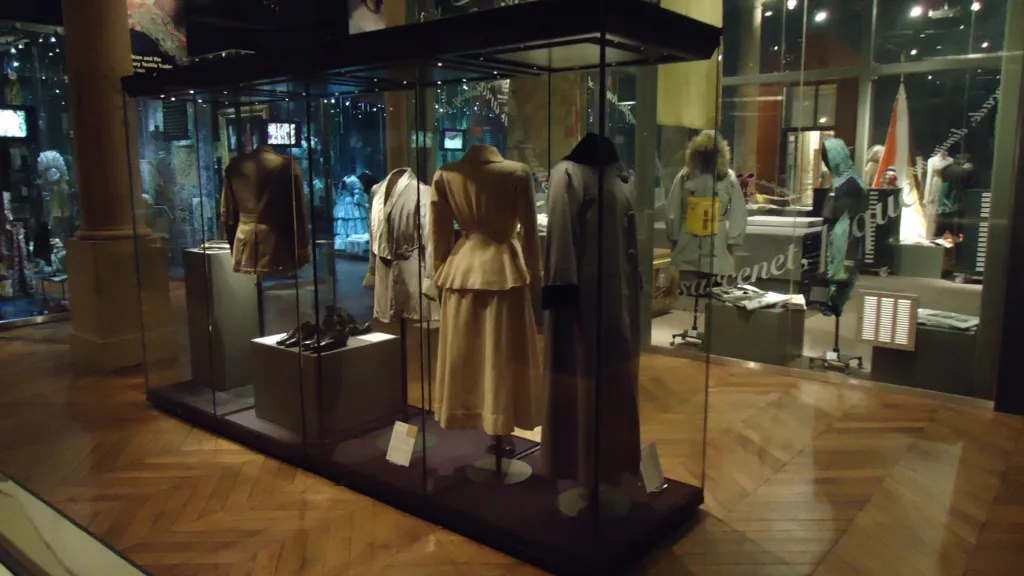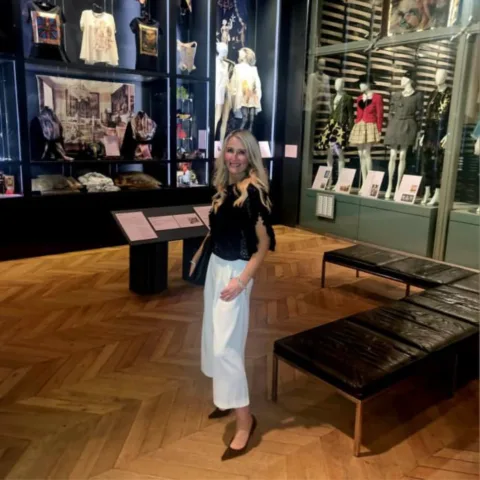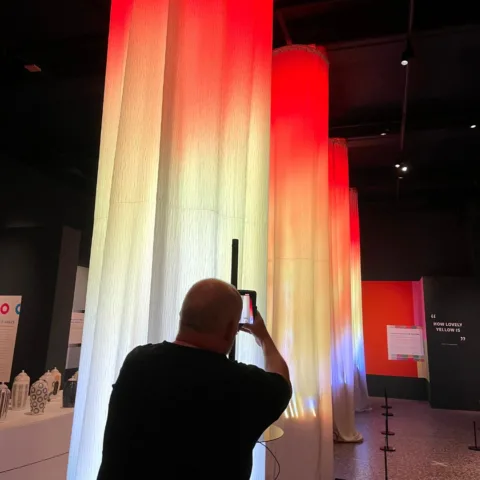The Bowes Museum Blog

World War One Fashion

The Fashion & Textile Gallery is currently showcasing two displays to tie-in with the centenary of the outbreak of World War One.
Students from Northumbria University’s BA Hons Fashion & Marketing course are presenting an exhibition of costume inspired by clothing of the era. Entitled Changing Times: Fashion Inspired by 1914-1918. The students have drawn upon a range of themes, from contemporary Edwardian clothing, to camouflage wear, the changes in wider society, and the traumas of the trenches. The display includes costume, lingerie, and the student’s workbooks.
To accompany the contemporary fashion show, we have displayed several items of costume from the museum’s own collection. These all date to 1914-18, with local connections to Teesdale and Newcastle. The display was curated by our new Assistant Curator, Hannah Jackson, while I carried out any necessary conservation work, and mounted the costumes.
One of the items on display is a leather handbag. It was purchased in Newcastle on the day the war broke out, August 4th 1914. The bag was a gift, for Abigail Fleming, of Middleton-in-Teesdale, from her mother. It is displayed with some of its contents. The original mirror has sadly been lost, but a small early plastic notecard, with propelling pencil survives, and still has Abigail’s name and address written on it. A small leather coin purse is attached by a fine metal chain. When the handbag was donated to the museum, it also contained a sewing kit, of needle and thread.
We are also showing a two-piece tailored wedding suit [CST.1362], worn by Frances Bradley for her marriage to Herbert Storey, both of Staindrop, Barnard Castle. They married on 18th April 1916 in the Primitive Methodist Chapel, Staindrop. The wartime economy necessitated a practical choice of daywear. The machine-made jacket and skirt are a cream twilled wool, with cream corded silk collar, cuffs and belt. Both are fully lined with a fine cream sateen. The Norfolk-style belted jacket has hip-length bias-cut basques, and the skirt is in the shorter and fuller style which appeared in 1916.
One of the more thought-provoking objects in the display is a pair of army boots [CST.1664]. The soles are still encrusted with mud, and they look as if someone has just stepped out of them. They were standard issue by the Territorial Army, and have ‘W^D’, ‘War Department’ stamped onto the leather above each ankle. By Katy Smith, Textile Conservator



![Wedding suit [CST.1362]](https://thebowesmuseum.files.wordpress.com/2014/08/cst-1362.jpg?w=146)
![Army boots [CST.1664]](https://thebowesmuseum.files.wordpress.com/2014/08/dsc09983.jpg?w=300)







